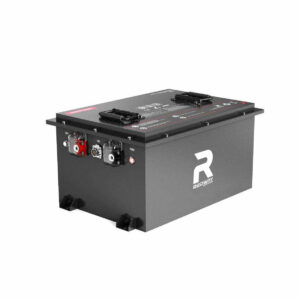What Are the Key Drivers Behind RV Marine Market Growth Trends
The RV marine market is growing due to rising demand for recreational boating, increased disposable income, and technological advancements in marine batteries. North America leads with robust infrastructure and high consumer spending, while Asia-Pacific shows rapid growth driven by tourism and urbanization. Hybrid and electric propulsion systems are also fueling market expansion.
What Factors Are Driving Demand for Marine Batteries?
Marine batteries are critical for modern RV marine applications, including electric propulsion and onboard electronics. Demand is surging due to the shift toward sustainable energy, longer battery lifecycles, and stricter emissions regulations. Lithium-ion batteries dominate the market, offering higher efficiency and faster charging compared to traditional lead-acid alternatives.
The rise of off-grid boating and extended marine expeditions has further amplified the need for reliable energy storage. Manufacturers are investing in solid-state battery research, which promises even greater energy density and safety. Additionally, solar-charged marine battery systems are gaining popularity, enabling eco-conscious boaters to reduce reliance on fossil fuels. Below is a comparison of common marine battery types:
| Battery Type | Energy Density | Lifespan | Cost |
|---|---|---|---|
| Lithium-ion | High | 8-10 years | $$$ |
| Lead-Acid | Moderate | 3-5 years | $ |
| Sodium-ion | Medium | 5-7 years | $$ |

Which Technologies Are Revolutionizing the RV Marine Sector?
Innovations like smart battery management systems (BMS), solar charging integration, and IoT-enabled diagnostics are transforming the industry. Advanced materials, such as graphene-enhanced batteries, improve energy density and durability. Autonomous navigation systems and AI-driven maintenance tools further enhance operational efficiency and safety.
72V 200Ah Lithium Golf Cart Battery
Why Are Sustainability Initiatives Impacting Market Dynamics?
Environmental regulations and consumer preference for eco-friendly products push manufacturers to adopt green technologies. Electric and hybrid engines reduce carbon footprints, while recycling programs for lithium-ion batteries gain traction. Governments offer subsidies for clean energy adoption, accelerating the transition from fossil fuels.
How Do Regional Policies Shape the RV Marine Market?
North America’s Clean Marina Program and Europe’s Green Deal incentivize sustainable practices. Asia-Pacific nations invest in marine tourism infrastructure, boosting market growth. Conversely, supply chain disruptions and raw material shortages in regions like Africa and South America create challenges for manufacturers.
For instance, the Clean Marina Program certifies marinas that adopt waste-reduction measures and eco-friendly dock materials. Europe’s Green Deal mandates a 55% reduction in marine sector emissions by 2030, pushing manufacturers to redesign propulsion systems. In contrast, Southeast Asian countries like Thailand and Indonesia are expanding coastal resorts and marina hubs, driving demand for leisure boats. However, geopolitical tensions in critical mineral-producing regions threaten lithium and cobalt supplies, highlighting the need for diversified sourcing strategies.
What Role Does Consumer Behavior Play in Market Trends?
Consumers prioritize convenience, safety, and sustainability, driving demand for user-friendly and eco-conscious products. Millennials and Gen Z favor tech-integrated RVs with connectivity features. Rental and sharing economies also rise, reducing ownership costs and expanding market accessibility.
Expert Views
“Redway’s research highlights lithium-ion dominance, but sodium-ion batteries could disrupt the market by 2030,” says a Redway energy analyst. “Integration of renewable energy sources and modular battery designs will redefine RV marine applications, offering scalability and reduced environmental impact. Collaboration between tech firms and marine manufacturers is key to overcoming current limitations.”
How OEM LiFePO4 Golf Cart Batteries are Made in factory?
Conclusion
The RV marine market thrives on innovation, sustainability, and shifting consumer preferences. Lithium-ion batteries and smart technologies remain central, while regional policies and environmental mandates shape competitive landscapes. Future growth hinges on overcoming supply chain barriers and advancing renewable energy integration.
News
The growth of the Recreational Vehicle (RV) and marine markets is influenced by several key drivers:
1. Rising Consumer Interest in Outdoor Recreation
An increasing number of consumers are prioritizing outdoor experiences, leading to sustained demand for RVs and marine vessels. The RV Industry Association projects wholesale shipments to reach approximately 350,100 units in 2025, reflecting this heightened interest.
2. Technological Advancements and Innovation
Manufacturers are integrating smart technologies and eco-friendly features into their products, enhancing user experience and appealing to environmentally conscious consumers. Innovations include advanced navigation systems, app-connected RV systems, and sustainable production practices.
3. Economic Factors and Interest Rates
Macroeconomic conditions, such as interest rates and consumer confidence, significantly impact market growth. While high interest rates have posed challenges, projections indicate a potential easing, which could bolster consumer financing options and stimulate sales.
Latest News in the RV and Marine Market (2025):
Winnebago Lowers Guidance Amid Market Challenges
Winnebago Industries reported a narrower-than-expected fiscal second-quarter loss but reduced its full-year financial outlook for 2025. The adjustment is attributed to macroeconomic challenges, including high interest rates and fluctuating consumer sentiment.
Thor Industries Reports Unexpected Loss and Cuts Outlook
Thor Industries experienced a significant stock decline after reporting an unexpected loss and reducing its future outlook due to a slowdown in consumer demand. The company cited challenging macroeconomic conditions as a contributing factor.
RV Shipments Projected to Climb in 2025
The RV Industry Association forecasts a modest increase in RV shipments for 2025, with projections ranging from 333,400 to 366,800 units. This growth is supported by continued consumer interest and anticipated easing of interest rates.
These developments highlight the dynamic interplay of consumer preferences, technological innovation, and economic factors in shaping the growth trends of the RV and marine markets.
FAQs
- Q: What battery type is best for marine RVs?
- A: Lithium-ion batteries are optimal due to higher efficiency, longer lifespan, and faster charging capabilities compared to lead-acid alternatives.
- Q: How do regulations affect RV marine market growth?
- A: Emission standards and sustainability incentives drive adoption of electric propulsion and renewable energy systems, accelerating market expansion.
- Q: Which regions lead in RV marine innovation?
- A: North America and Europe lead due to advanced infrastructure and regulatory support, while Asia-Pacific shows rapid growth in marine tourism.
